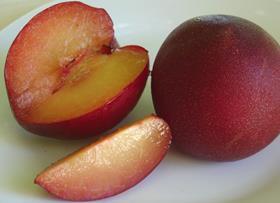
The current drought in the Western Cape region of South Africa will have a major effect on the stonefruit season, but at this stage it is impossible to quantify how big the impact will be.
The consensus is that the season will start off well with good early crops. Fruit produced in the northern regions of South Africa, which traditionally deliver the first fruit in early October, will not be affected and these regions will deliver their normal crops.
Most of South Africa’s stonefruit categories recorded increases on the 2015/16 crop during the past season. Apricot exports reached 774 000 cartons, nectarines 4.1m cartons, peaches 2.1m cartons and plums 12.2m cartons. However, very few industry people would bet on these levels being met again this year.
The Western and Eastern Cape could run into major problems from January onwards if growers who have dams on their farms have not been able to fill them during the winter.
“That is why the situation differs from farm to farm,” said Jacques du Preez of Hortgro. “Some growers will have enough to see them through the season, but others will not. For them it will be a difficult season.”
Du Preez says the industry will meet for the first time in early October to try and derive a crop estimate. “I do not know if we will be able to develop an accurate estimate, because there are still many outstanding factors which will have to be taken into account between now and the end of the year.”
It is understood that the problem for stonefruit growers in the Berg River region will be most difficult.
“If there are no dams on the individual farms which could have been filled during the winter and where growers have to rely exclusively on water from the Berg River, there will be major problems,” noted Pierre Rossouw of Stems. Further afield, in the Ceres and Langkloof areas there are also reports of dry conditions.
Roussouw summed the situation up very well when he said that this stage, where the early varieties having flowered and set their fruit, things actually looks very good.
“We had enough cold hours in the winter and the dry weather will give us excellent fruit quality. We do not know what will happen with the mid-season and late cultivars when growers have to contend with high summer heat.”
Jaco van Lill of Fruits Unlimited said one fallout will be smaller fruit. “Growers are trying to control their crops on the tree as not to over-tax the trees so they will also have a crop next year.”






No comments yet